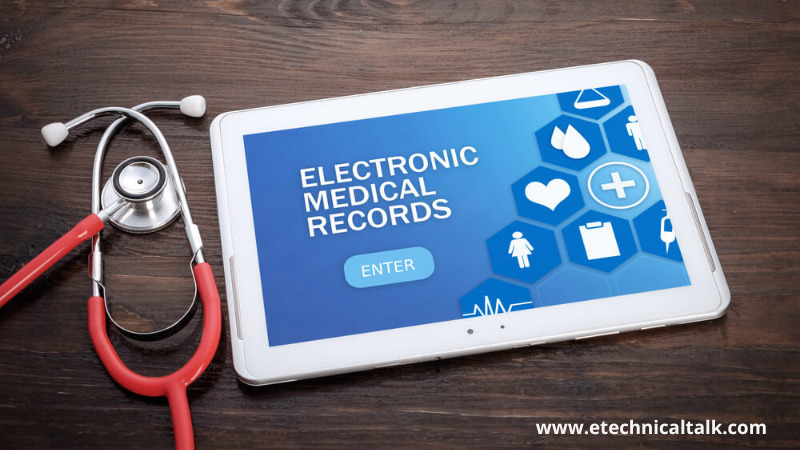
You’ve probably heard a lot about electronic health records (EHRs) by now. These computerized systems provide a way for healthcare providers to manage patient data electronically. They offer several advantages over traditional paper records.
Better patient care is one of the main benefits of EHRs. With all of a patient’s information readily available in one place, providers can make more informed decisions about diagnosis and treatment. EHRs also make it easier to coordinate care among different providers, such as specialists.
Electronic medical records are a major step forward in the effort to improve patient safety. With paper records, it’s easy for important information to get lost or mixed up. EHRs can help avoid such problems by providing alerts and reminders. For example, when a patient is due for a preventive screening or immunization.
There are several advantages of EHR (electronic medical records) for both patients and providers.
Here are the Top 10 Benefits of EHR:
1) Improved quality of care:
It provides easy access to complete and up-to-date information. In this way, providers can make more informed decisions about diagnosis and treatment. EHRs also make it easier to coordinate care among different providers, such as specialists.
This leads to fewer duplication of tests and lower risks of errors and omissions.
2) Greater efficiency and productivity:
EHRs can help save time in several ways. For instance, by automating routine tasks such as scheduling appointments, generating reminders, and sending prescription renewals.
They also make it easier to share information with other providers. This can avoid duplication of work and save time. This offers a great healthcare solution to both provider and consumer.
3) Reduced costs:
EHRs can help lower health care costs in several ways. For example, by eliminating the need for paper records, which can be costly to store and maintain. They can also help reduce the need for duplicate tests and procedures.
It works the other way around too, by providing better coordination of care, and fewer errors and omissions. This is one of the biggest advantages of EHR.
4) Improved patient safety:
EHRs can help reduce the risk of medical errors in several ways. For instance, by providing alerts when a patient is due for a preventive screening or test. They can also flag potential drug interactions.
This not only saves lives, but it can also save money. Medical applications often come into play with higher mobility in avoiding a range of errors and unnecessary expenses with EHRs. Ultimately improving the overall healthcare system.
5) Reduced paperwork:
EHRs can help save time by reducing the need for paper records. This is not only more efficient, but it can also free up storage space. Additionally, EHRs can make it easier to share information with other healthcare providers. This can ultimately lead to better care for patients.
6) Increased efficiency:
EHRs can help streamline the process of scheduling appointments, ordering tests and procedures, and prescribing medications. They can also help reduce the amount of time spent on paperwork.
This results in increased efficiency and productivity for both healthcare providers and patients.
7) Improved communication:
EHRs can facilitate communication between healthcare providers. This is especially important when multiple providers are involved in a patient’s care. EHRs can also help improve communication with patients by providing them with online access to their medical records.
8) Enhanced decision-making:
The use of EHRs can improve the quality of care by providing healthcare providers with better information for decision-making. EHRs can also help to standardize care processes and treatments. This can ultimately lead to better outcomes for patients.
It provides easy access to comprehensive information about each patient. This improves communication between patients and providers.
9) Improved population health:
EHRs can be used to target interventions to improve population health. For example, if a particular population is at risk for a certain disease, EHR data can be used to develop and implement prevention and control measures.
Through this, one can also predict an outbreak of a disease and take necessary actions to control it. This would eventually lead to improved population health and offer great health care solutions.
11) Improved efficiency and coordination of care:
EHRs can help healthcare providers coordinate care more effectively by providing easy access to a patient’s medical history and records. This information can be shared with other providers involved in a patient’s care, which can help to avoid duplication of tests and procedures, and ultimately result in better coordination of care.
12) Increased patient satisfaction:
EHRs can improve communication between patients and providers. This can lead to better-informed patients who are more engaged in their care. Ultimately, this can lead to increased patient satisfaction.
The EHR also provides patients with online access to their health information. This comes with the ability to communicate electronically with their providers. This can improve patient satisfaction by providing more transparency.
13) Increased provider satisfaction:
EHRs can improve provider workflow and communication. This can lead to increased provider satisfaction and retention. EHR offers the ability to customize workflows to the needs of each provider.
Also Read: What are the best digital marketing strategies for virtual events?
This not only leads to increased provider satisfaction but can also lead to increases in productivity.
14) Reduced extra burden:
EHRs have the potential to reduce the overall cost of healthcare. One way they accomplish this is by reducing duplication of services.
For example, if a patient sees multiple providers, each provider may order the same tests. With an EHR, test results can be shared electronically, so that duplicate tests are not ordered.
Working of EHR
EHR systems are designed to store all of a patient’s medical history in one place. This medical history includes everything from demographics and vital signs to diagnoses, medications, lab results, and immunizations.
Some EHR systems also allow patients to enter their health information, such as a list of current medications or allergies.
This self-entered data is then incorporated into the patient’s record.
EHRs are intended to be a complete record of a patient’s care, from birth to death. For this to be possible, EHRs must be interoperable, which means that they must be able to exchange data with other EHR systems.
EHRs are maintained by healthcare providers on behalf of their patients. Providers may use an EHR system developed by a commercial vendor, or they may use a system developed internally.
Conclusion
There are several benefits of EHR. These advantages can lead to improved patient care, increased provider satisfaction and retention, and reduced overall healthcare costs.
For more interesting blogs go here:- Etechnicaltalk













